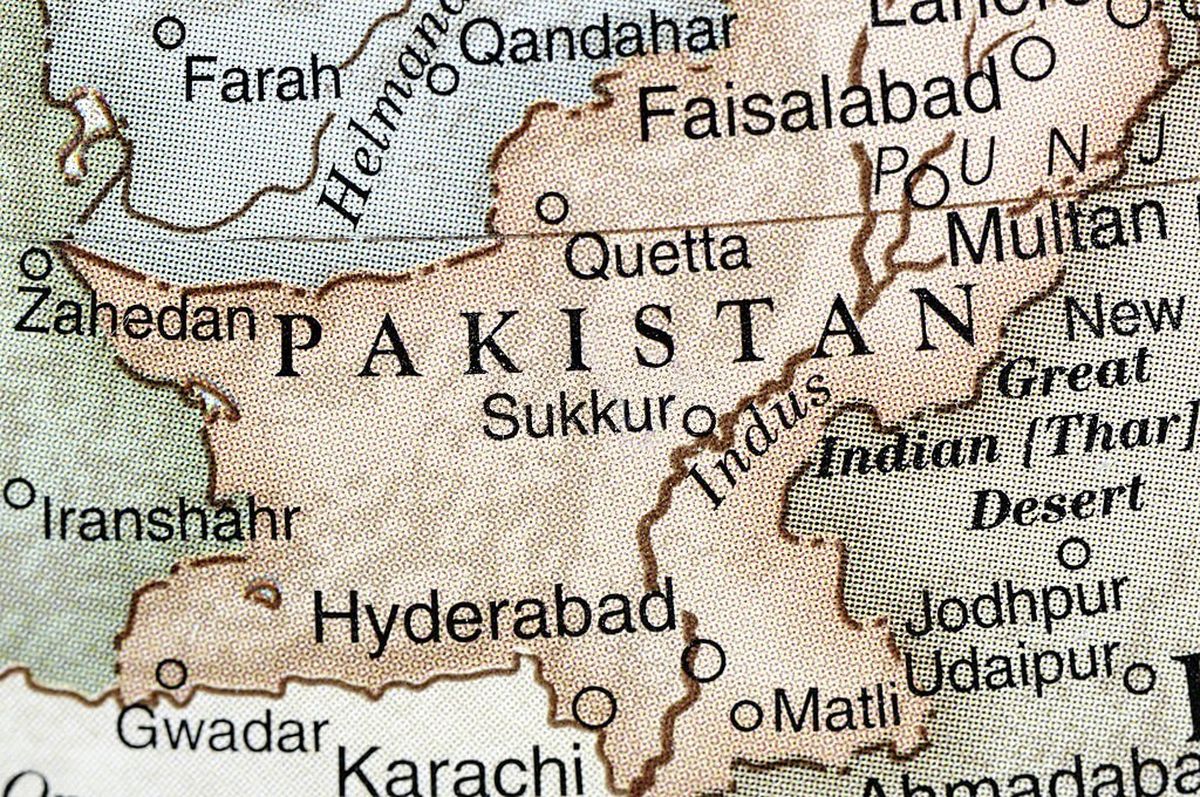Up until the early twentieth century, it was believed that India was inhabited by aboriginal stone-age tribes since around 1500 BC when Indo-Europeans called ‘Aryans’ invaded the subcontinent from Central Asia with horses and iron weapons.
Indian civilization was seen as a direct result of this invasion. Although the dating at that time was just what can be called the best guess and not supported by any scientific or archaeological evidence, the theory seemed to fit the pattern of later Central Asian invasions as well as explain linguistic similarities between Sanskrit and European languages.
Most importantly, it was politically convenient at that time as it painted the British as merely latter-day Aryans with a mission to civilize the natives. This theory, however, had to be drastically revised when remains of the sophisticated Harappan civilization were discovered. They proved that Indian civilization clearly predated 1500 BC.
In the late nineteenth century, Lahore–Multan railway line was being constructed when wagon-loads of bricks were removed from old mounds to be used as counterweights. The worker noted that the bricks were of exceptionally good quality and concluded that they were of relatively recent origin.
In the winter of 1911–12, D.R. Bhandarkar of the Archaeological Survey of India (ASI) then visited one of the sites in Sindh called Mohenjodaro (which literally means Mound of the Dead). He came back disappointed. In his view, the bricks were of a ‘modern type’ and the locals had told him that they were from a town that had been abandoned just two hundred years earlier.
Fortunately, in the 1920s, Rakhal Das Banerji and Sir John Marshall of the ASI decided to revisit the site. Another team led by Daya Ram Sahni began to excavate another site called Harappa in Punjab (both these sites are now in Pakistan).
They were shocked when they realized that mounds of bricks scattered along the Indus Valley were the remains of a much older civilization. Soon after, they were even further shocked to find that the civilization could be one of the oldest in the world.
It was a contemporary of the Sumerians, the Minoans, and the ancient Egyptians. It was named the Indus Valley or Harappan civilization.
1. A major ancient civilization that remained hidden for a long time
The reason that the Harappan sites were ignored for so long is that they lack grand structures like the Pyramids of Giza that stare out at a visitor. There are large buildings that have been given names like ‘granary’, ‘assembly hall’, ‘citadel’, and ‘college’ but these designations are essentially arbitrary.
It is still not known what these buildings were really used for and, in most cases, we have little more than foundations and lower walls.
There is nothing that is obviously a great palace or a temple. One of the few major buildings that we can definitely identify is the ‘Great Bath’ in Mohenjodaro but even, in this case, we do not know if the structure was used for religious rituals (as in later Hindu temples), a bathing pool for the royal family or some completely different purpose.
2. Indus Valley Civilization had amazing town planning and urban settlement
Harappan sites are remarkable for their attention to urban design and active municipal management. At its height, the Harappan civilization was very consciously urban. A large city like Mohenjodaro (now in Pakistan) may have had a population of around 4o to 50 thousand people. This was a great achievement, considering that the world population at the time is estimated to be around 202 million in 2000 BCE.
Furthermore, we see thorough town planning in every detail—standardized bricks, street grids, covered sewerage systems, and so on. Similarly, a great deal of effort was put into managing water. The solutions varied from city to city. Mohenjodaro alone may have had 600-700 wells.
At Dholavira in Gujarat, water was diverted from two neighboring streams into a series of dams and preserved in a complex system of reservoirs. Many houses, even modest ones, have their own bathrooms and toilets connected to a drainage network that is emptied into soak jars and cesspits.
3. Many customs and tools from Indus Valley Civilization continue even today
The toilet commodes were made up of big pots sunk into the floor. Most interestingly, as historians point out, the toilets came equipped with a ‘lota’ for washing up. This must count as one of the most important and lasting Harappan contributions to Indian civilization. Unfortunately, the toilet design did not survive quite as well as the Lota.
We also know that the people of the civilization were actively engaged in domestic and international trade. For land transport, the Harappans used bullock carts that are almost exactly the same as those that can still be seen in rural India.
Cart ruts from Harappa show that even the axle gauge was almost exactly the same as that of carts used in today’s Sindh. The streets of Mohenjodaro, Harappa, and Dholavira would have been full of these bullock-carts ferrying goods and merchants.
Thousands of years later, French traveler Tavernier would speak of how seventeenth-century Indian highways were clogged by bullock-cart caravans that could have as many as 10,000–12,000 oxen.
He goes on to describe how, when two such caravans met on a narrow road, there would be a traffic jam and it could take two or three days for them to pass. One can imagine Harappan highways would have been quite similar. Perhaps it was one of the great continuities of Indian history.
4. Indus Valley Civilisation was involved in world trade
There is strong evidence that the Harappans traded actively with the Persian Gulf. The merchant ships likely hugged the Makran coast, perhaps with a pit stop at Sutkagen-dor, and then sailed on to the ports of the Persian Gulf. Mesopotamian tablets mention a land called Meluhha that exported bead jewelry, copper, wood, peacocks, monkeys, and ivory.
These sound like goods that Indians would have exported. It is also likely that they exported cotton textiles since the Harappans were the world pioneers in the spinning and weaving of cotton.
To this day, the Indian subcontinent remains a major exporter of cotton textiles and garments. Strangely, we have no idea what the Harappans imported. Hardly any object of Mesopotamian origin has been found at Harappan sites. Perhaps they imported consumables like dates and wine but we really do not know. The same can be said about trade with Iran and Central Asia.
5. Civilization did not suddenly appear or disappear
We now know that this civilization did not suddenly appear or disappear. Excavations in Mehrgarh, near Quetta in Balochistan, show the gradual evolution from a Neolithic village to an increasingly more sophisticated culture from around 7000 BC.
The earliest recognizably Harappan sites date to 3500 BC. This early phase lasts till around 2600 BC. We then enter the Mature phase from 2600 BC to 2000 BC. This is when the great cities were at their height. Note that this is a Bronze Age culture and there is no systematic use of iron.
Then, from around 2000 BC we have a steady disintegration that lasts till 1400 BC—what is usually called Late Harappan.
Nonetheless, there are clear signs that the overall civilization was under severe stress after 2000 BC. We see steady deterioration in municipal governance till one by one the great cities are abandoned.
You May Also Like: Harappan Civilization End-What Happened To India’s First Cities?
6. Chess pieces were found at various sites
Most interesting of all, chess pieces that look remarkably like modern equivalents have been found at Harappan sites. It has long been known that chess originated in India but it is extraordinary that the game, or something similar, was being played more than four thousand years ago. Even the famous town planning of the Harappans may have survived in later times.
The streets of Kalibagan, a large site in Indian Punjab, are laid out with widths in a progression of 1.9 m, 3.8 m, 5.7 m, and 7.6 m—the same as those prescribed in the Arthashastra. In short, the Harappans did not just disappear; they live on amongst us.
They merged with the wider population and seeded what we now know as the Indian civilization. However, the Indian civilization has parallel roots, in particular, the Vedic tradition and its continuous history to this day. It is to this that we now turn.
7. Largest Civilization
By the time of its mature phase, the civilization had spread over an area larger than the others, which included a core of 1,500 kilometers (900 mi) up the alluvial plain of the Indus and its tributaries. In addition, there was a region with wide variations in flora, fauna, and habitats, up to ten times as large, which had been shaped culturally and economically by the Indus.
The civilization extended from Pakistan’s Balochistan in the west to India’s western Uttar Pradesh in the east, from northeastern Afghanistan in the north to India’s Gujarat state in the south.
At its peak, it is estimated that around 10% of the world’s total population was concentrated in the Indus Valley Civilization. Some estimates go as high as five million people – a million more than the population of Los Angeles today!
8. No Palace or Temples
Religion had always played a big role in most ancient civilizations, and the same is true with Kings. But archaeologists have never found any evidence of palaces or temples in the Indus Valley. This suggests that there were no priests or kings.
It is not to say that they did not worship or there was no administration. The Indus people probably worshipped Mother Goddess, in addition to male and female deities.
9. No Armies and Offensive Weapons
There is no archaeological evidence that the people of the Indus Valley had an army or weapons. This is unique among the ancient civilizations of the world.



